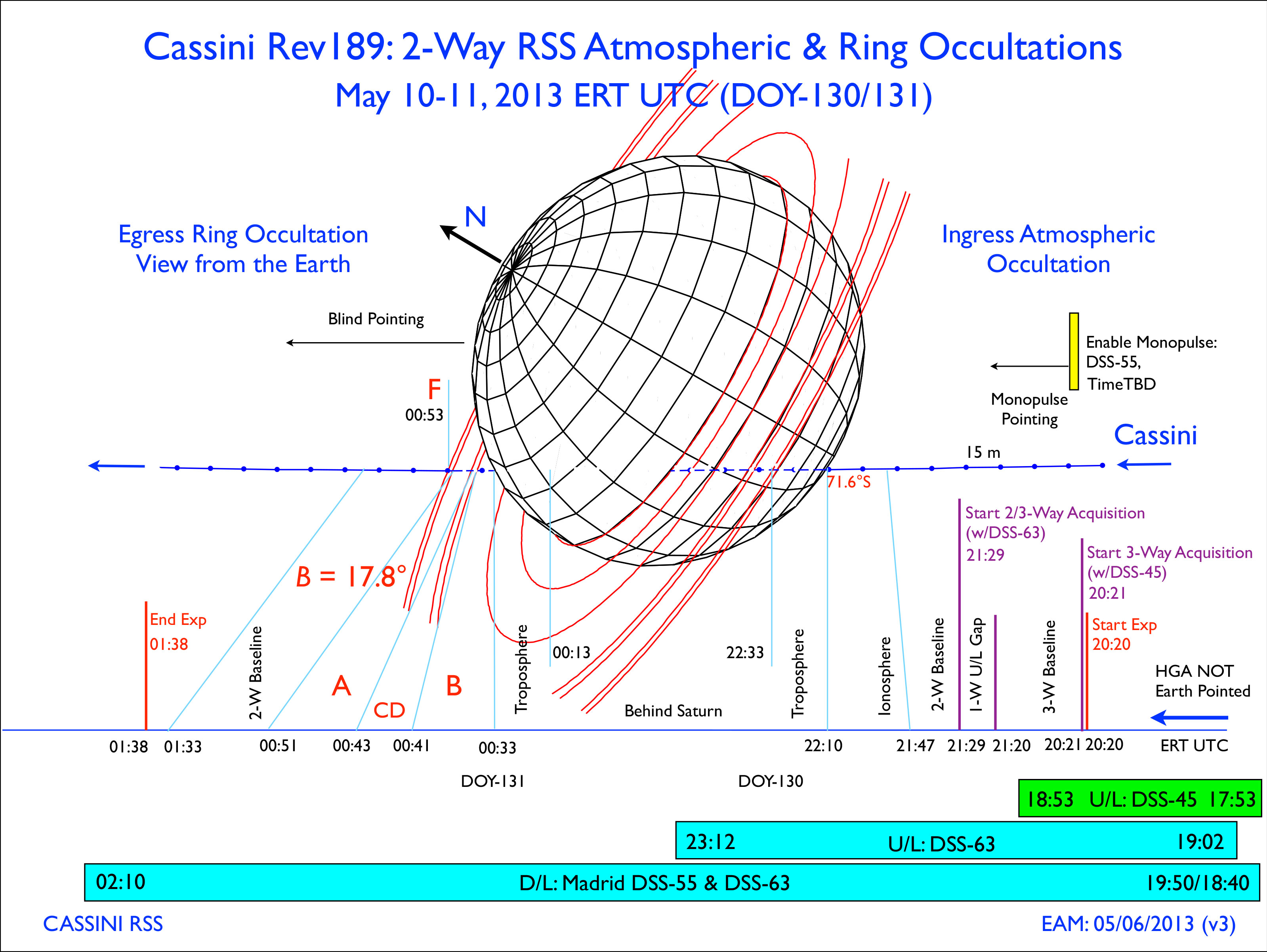May 2013 Radio Science Occultation Experiment

| Language |
|
|---|
+ Higher Resolution
This graphic illustrates the Radio Science Occultation Experiment conducted on Friday May 10, 2013.
Details and description of terms:
Dots are spaced at 15-minute (15 m) intervals along the central blue line representing Cassini's path behind Saturn, going from right to left, which is southwest to northeast in the sky. Terms and abbreviations:
2 / 3 Way: Signal received on Earth based on uplink from Earth. 2-Way means same DSN station uplinking & receiving; 3-Way means a different station receiving.
1-W: One way downlink communications, spacecraft not receiving an uplink reference frequency
2-W: Two-way (see above)
3-W: Three-way (see above)
71.6° S: Southern Saturn Latitude
Greek letter B (beta): Angle of ring-plane slant as viewed from Earth
Red letter A: Saturn's A ring
Red Letters CD: Cassini Division in Saturn's rings
Red Letter B: Saturn's B ring
Red Letter F: Saturn's F ring
Acquisition: Receiving the signal from Cassini in the DSN antennas and receivers
Blind pointing: A technique for pointing DSN antenna based on predictions
ERT: Earth-Receive Time
Exp: Experiment (Radio Science Occultation Experiment)
D/L: Downlink; signal from spacecraft to Earth
DOY: Day of Year
DSN: Deep Space Network
DSS: Deep Space Station (DSN Station)
DS-63: A 70-meter diameter DSN station at Madrid, Spain
DS-55: A 34-meter diameter DSN station at Madrid, Spain
DSS-45: A 34-meter diameter DSN station at Canberra, Australia
HGA: Cassini's High-Gain Antenna
Monopulse pointing: A closed-loop technique for refinement of DSN antenna pointing based on received signal
Rev 190: Cassini's Saturn orbit #190
RSS: Cassini Radio Science Subsystem
RTLT: Round-Trip LIght-Time of the radio signals
S/C: Spacecraft
TBD: To be determined (was determined) in real time
U/L: Uplink; signal from Earth to spacecraft
UTC: Universal Time Coordinated
The Cassini-Huygens mission is a cooperative project of NASA, the European Space Agency and the Italian Space Agency. The Jet Propulsion Laboratory, a division of the California Institute of Technology in Pasadena, manages the mission for NASA's Science Mission Directorate in Washington. The Cassini orbiter and its two onboard cameras were designed, developed and assembled at JPL. The imaging team is based at the Space Science Institute, Boulder, Colo.
For more information about the Cassini-Huygens mission visit http://saturn.jpl.nasa.gov or http://www.nasa.gov/cassini .
Image courtesy of Cassini Radio Science Subsystem team.
Credit: Essam A. Marouf (EAM)
